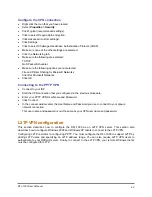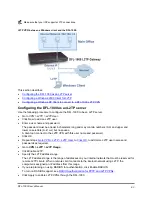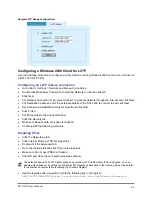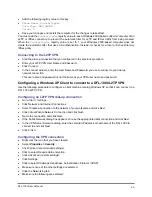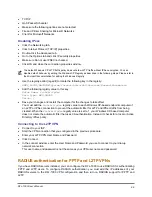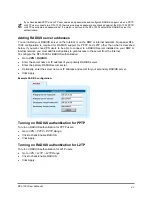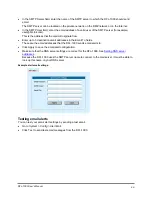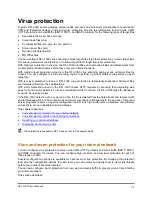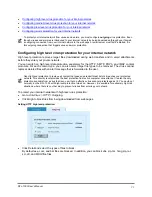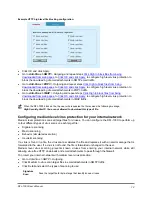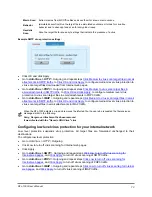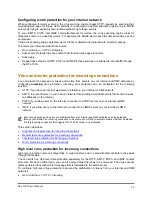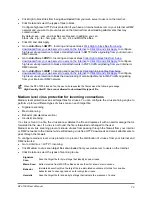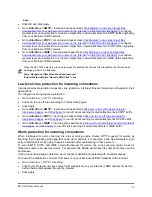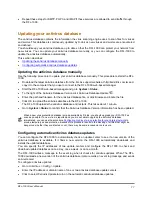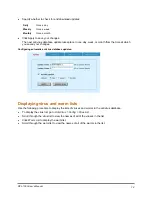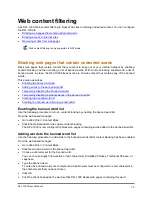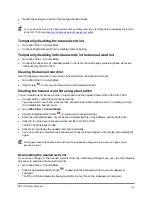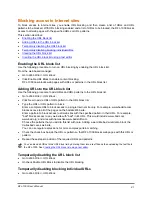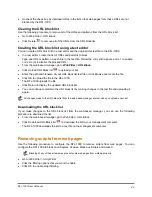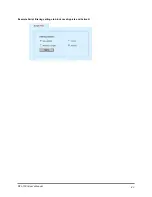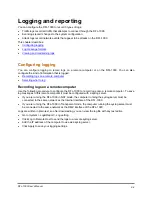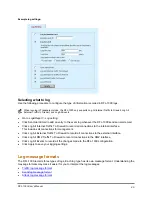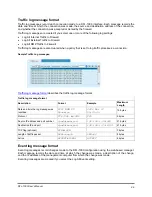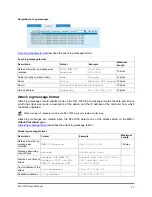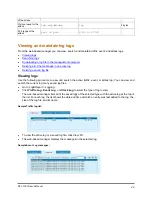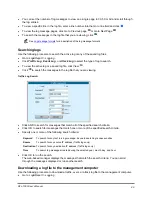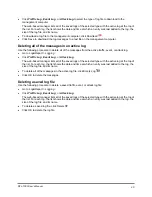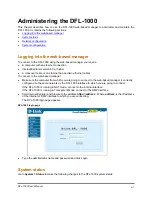
Scan
•
Click OK and click Apply.
•
Go to
Anti-Virus > SMTP
> Incoming and repeat steps
Click Medium to virus scan target files
downloaded from your web server to users on the Internet.
to configure
medium level virus protection to virus scan target files in email attachments in SMTP traffic originating
from your internal or DMZ network.
•
Go to
Anti-Virus > POP3
> Incoming and repeat steps
Click Medium to virus scan target files
downloaded from your web server to users on the Internet.
to configure
medium level virus protection to virus scan target files in email attachments in POP3 traffic originating
from your internal or DMZ network.
•
Go to
Anti-Virus > IMAP
> Incoming and repeat steps
Click Medium to virus scan target files
downloaded from your web server to users on the Internet.
to configure
medium level virus protection to virus scan target files in email attachments in IMAP traffic originating
from your internal or DMZ network.
When the DFL-1000 detects a virus and removes the infected file, the user who requested the file receives a
message similar to the following:
Sorry, Dangerous Attachment has been removed.
It was infected with the "Generic VBA Virus" virus
Low level virus protection for incoming connections
Incoming low level protection suspends virus protection. All target files are forwarded unchanged to their
destinations.
To configure incoming low level protection:
•
Go to
Anti-Virus > HTTP
> Incoming.
•
Click Low to turn off virus scanning for Internet web pages.
•
Click Apply.
•
Go to
Anti-Virus > SMTP
> Incoming and repeat steps
Click Low to turn off virus scanning for
to turn off virus scanning for email attachments in SMTP traffic.
•
Go to
Anti-Virus > POP3
> Incoming and repeat steps
Click Low to turn off virus scanning for
to turn off virus scanning for email attachments in POP3 traffic.
•
Go to
Anti-Virus > IMAP
> Incoming and repeat steps
Click Low to turn off virus scanning for Internet
to turn off virus scanning for email attachments in IMAP traffic.
Worm protection for incoming connections
When configured for worm scanning, the virus scanning engine checks HTTP requests for worms by
scanning their originating web page for known worm patterns. For example, Code Red attempts to gain
entry to MS IIS servers by trying to exploit a known buffer overflow bug in these servers.
To scan SMTP, POP3, and IMAP email attachments for worms, the virus scanning engine looks for
filenames known to be used by worms. For example, the Nimda worm uses files named readme.exe and
sample.exe.
If the virus scanning engine detects a worm, the file is deleted and replaced with an alert message.
To prevent the distribution of worms from servers on your internal and DMZ networks to the Internet:
•
Go to
Anti-Virus > HTTP
> Incoming.
•
Click Worm Protection to scan content from web servers on your internal or DMZ network for worms
before that content passes through the firewall.
•
Click Apply.
DFL-1000 User’s Manual
76

